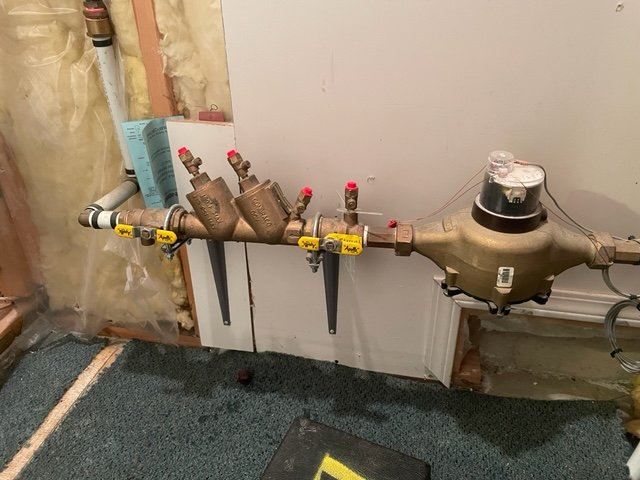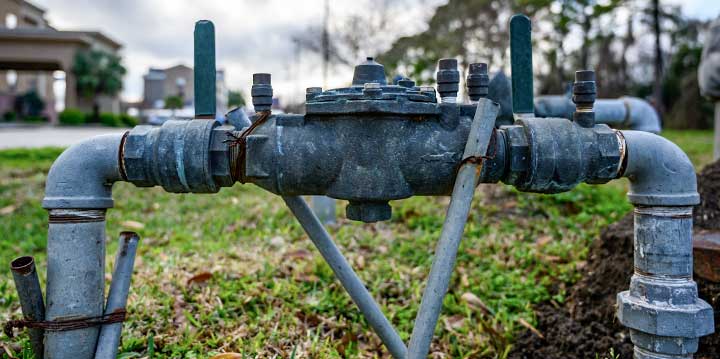Should I Test My Water for Backflow
Should I Test My Water for Backflow
Blog Article
How do you actually feel about Backflow Testing?

Yes, you need to backflow examination your home's supply of water to ensure that the water is devoid of contaminants and hazardous levels of chemicals. You must not try to execute backflow testing on your own since of the tools required and also space for error. We recommend that you call a professional plumber every couple of years to evaluate your water.
What is Backflow?
Simply put, backflow is when water moves upwards-- the contrary direction in the plumbing system. This is additionally called "backpressure." When the water relocates this instructions, it can combine with hazardous contaminants and position a threat.
What Causes Heartburn?
A common cause of backflow is a loss of water stress that triggers the water to siphon back right into the water supply. After some time, there is a loss in water pressure as well as the hose begins to suck the water back right into the water supply. As you can think of, there are now chemicals from the paint that are going into the water supply, possibly positioning a hazard.
Backflow Screening is Needed by Law in Specific Cities
Depending on where you live, you could really be called for by regulation to backflow test your legislation. Iowa City maintains a record of all residential properties offered by the city's water supply.
You Can Prevent Backflow
The main function of a heartburn gadget is to stop water from moving in reverse right into your water supply. Plumbing professionals install the gadget on the pipes in your home to make certain that the water only streams in the correct direction.
Heartburn Can Impact Both You and also Your City
Numerous cities develop heartburn standards because dangerous backflow can affect the general public water supply in addition to a solitary structure. Fortunately, contemporary cities have backflow gadgets in position that safeguard the water that comes from many houses and commercial residential properties. The real hazard originates from watering systems, which can hurt the water with poisonous plant foods, manure, and various other chemicals.
Call a Plumber to Check for Heartburn Prior To It is Too Late
While it may sound grim, polluted water can result in awful microbial and viral infections that are tough to deal with. If there are any hazardous chemical levels, a plumbing company can rapidly check your residence's water to establish. The tiny financial investment is if you can stay clear of the misery that originates from consuming alcohol infected water. And if you do discover that your water has high degrees of toxic substances, a plumber can conveniently mount a heartburn avoidance tool.
Yes, you require to backflow test your house's water supply to guarantee that the water is cost-free of toxins as well as harmful levels of chemicals. A regular reason of heartburn is a loss of water stress that creates the water to siphon back right into the water supply. After some time, there is a loss in water stress as well as the tube starts to suck the water back into the water supply. The main purpose of a heartburn tool is to protect against water from flowing in reverse right into your water supply. Many cities establish backflow guidelines because dangerous heartburn can influence the public water supply in addition to a solitary building.
Backflow Testing: What Is It, and Why Is It Necessary?
What Is Backflow?
Backflow is exactly what you might imagine this somewhat gross-sounding word to mean. It is contaminated water that has reversed flow, and as a result, enters into the clean water lines of homes and businesses. Backflow is typically caused by a significant change in water pressure. This can be due to a water main break, frozen pipes or an unexpectedly high demand on the water system. It can occur at any cross-connection between clean and dirty water in residential, commercial or industrial water lines. And the worst part – backflow can contain hazardous materials like human waste, pesticides or chemicals. Needless to say, it poses very, very serious health concerns, not to mention the potential for a heap-load of expensive stress!
Backflow Prevention and Testing
In order to safeguard against backflow in standing structures, a backflow prevention device should be installed by a trusted team of professionals. Once installed, if there should ever be an unexpected or dramatic change in water pressure, the device will prevent backflow from entering into the clean water supply system. But, again, it’s important that this device is properly installed by a professional so that they can test it and ensure that the clean water line remains contaminant free. This really is key.
While personal standards and responsibilities should maintain certain routine testing requirements, there are already municipal codes in place that require annual testing of these backflow prevention devices. This ensures that they are functioning properly and that no hazardous contaminants are spilling out into the clean water supply. If, however, testing of any device is not completed on time, you should know that a property or business’ water supply might be interrupted, and the property owner might even face fines. So, to avoid this from happening to you, we recommend scheduling a backflow test well in advance.
Fortunately, here at Tritan, we can help schedule and carry out backflow testing for your property. We provide a variety of backflow-related services, including prevention device installation and testing. Call us today and make sure that this stressful problem doesn’t happen to you and your property or business.
https://www.tritan-plumbing.com/blog/2018/february/backflow-testing-what-is-it-and-why-is-it-necess/

I have been very fascinated with Backflow Prevention and I hope you enjoyed the entire post. I beg you take the time to distribute this entry if you enjoyed it. We truly appreciate reading our article about Backflow Prevention.
We've got this! Report this page